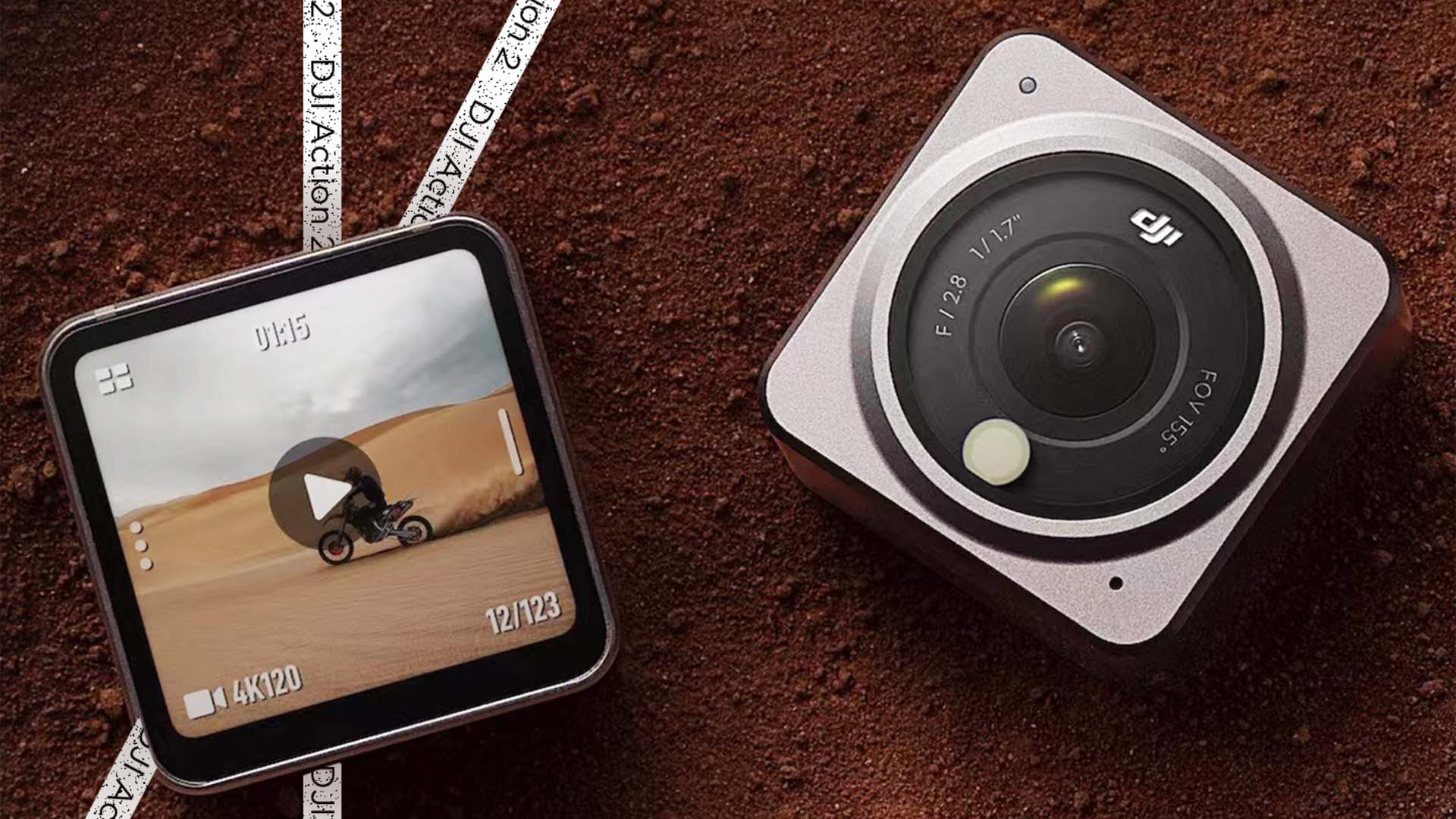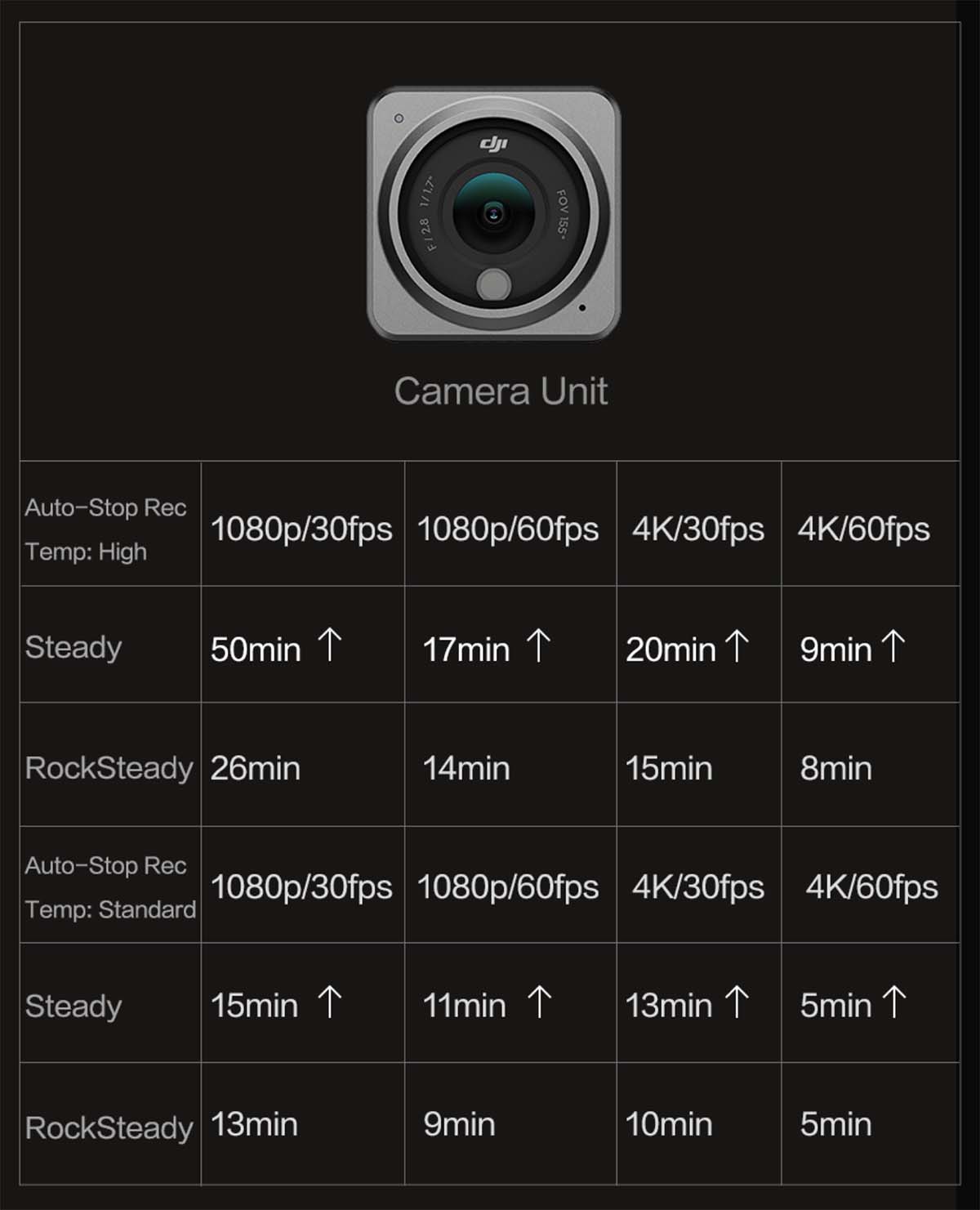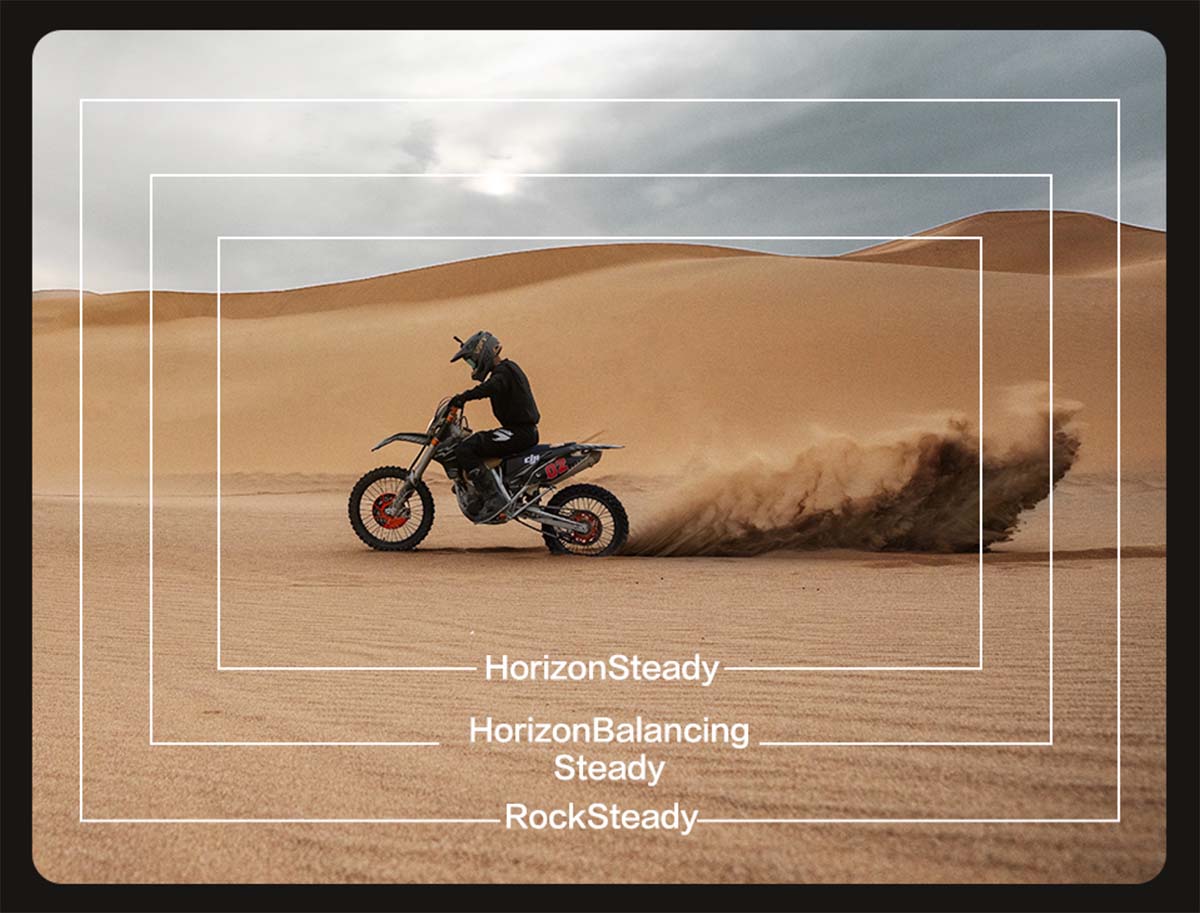
DJI has been hard at work improving the performance of its latest action camera, the Action 2.
DJI has a great track record when it comes to improving its devices capabilities through firmware. This latest Action 2 firmware 01.02.10.10 update is no exception.
To begin with the company has added horizon levelling up to 45-degrees in frame rates up to 60fps. Previously the camera had a HorizonSteady mode, which keeps the horizon level through 360 degrees of rotation. However, it came at a cost of a narrowed FOV. The new Horizon Balancing mode allows a wider FOV, but with more limited horizon levelling up to 45-degrees.
All this comes with a new Steady stabilisation mode. DJI's top of the line stabilisation mode is called RockSteady, but the new Steady mode is more power frugal and reduces image distortion during stabilisation. The chart below shows how long the camera can record for in respective modes before the temperature cut-off kicks in.

This chart shows how long you can record for in Steady mode vs RockSteady mode before the thermal cut-off kicks in. Note that the "Auto-Stop Rec Temp: High" setting is not available on European models of the camera. Image: DJI.
The new mode means that the Action 2 now has four modes of stabilisation. Steady, RockSteady, Horizon Balancing, and HorizonSteady. The newSteady mode is now the default setting for the camera, and because it is less processor intensive it uses less battery power and also generates less heat. However it does come at the cost of a narrower FOV than the much more processor intensive RockSteady. DJI has provided an FOV illustration of the different modes below.

Image: DJI.
Timelapse low power mode and DJI Mic remote control
A new low power mode for Timelapse switches the camera's LCD screen off after 10-seconds once the record button is pressed.
The DJI Mic has now also been given a new function whereby camera recording can be started by pressing the mic transmitter's linking button. This could be useful when you are vlogging and the camera is mounted a distance away.
The camera will now check the IMU and offer horizon calibration options if needed. Other improvements include optimised power efficiency when charging the LCD and Power modules, improved MicroSD compatibility, UI improvements when formatting cards, optimised UI for transferring files from the camera unit to an SD card, and UI improvements to prevent accidental use of the zoom icon. There are also some other minor bug fixes along the way.
The update can be downloaded by owners within the DJI Memo app.
Watch our original review of the camera below.
Tags: Production News Cameras Action cameras


Comments